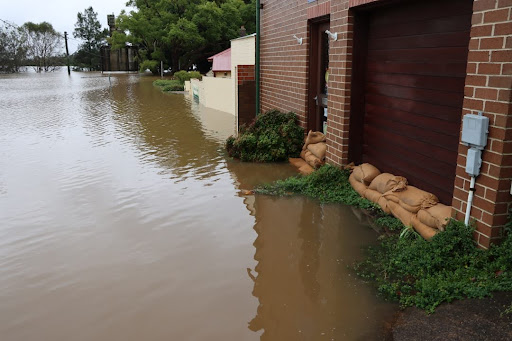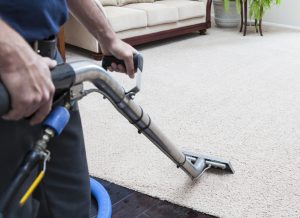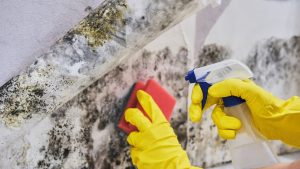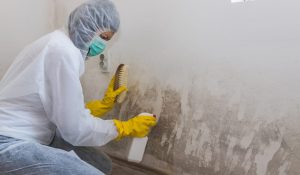
Water damage can be a property owner’s worst nightmare. It can cause significant harm to both the structure and contents of a property.
But what if there was a way to minimise this damage? A process that could prevent further harm and set the stage for successful restoration?
Enter water mitigation.
Water mitigation is the first, critical step in the water damage restoration process. It involves immediate action to stop the spread of water, reducing further damage and loss.
This article will delve into why water mitigation is so crucial for successful water damage restoration. We’ll explore its role, benefits, and how it integrates with the overall restoration process.
Whether you’re a property owner, a facility manager, or a professional in the restoration industry, this information is vital. It could make the difference between a swift recovery and a prolonged, costly restoration ordeal.
Understanding Water Mitigation and Its Role
Water mitigation is the process of reducing or preventing the amount of water damage after an initial incident. It focuses on stopping further damage by removing water and ensuring the property is safe to work in.
This process is essential in the restoration journey because it sets the groundwork for a successful recovery. By addressing the water issue promptly and thoroughly, water mitigation limits structural damage and prevents mould growth. It helps ensure that restoration can proceed efficiently, saving time and reducing overall costs. Without effective mitigation, restoration efforts may be significantly impaired.
The Immediate Response: Preventing Secondary Damage
Acting quickly after water damage occurs is crucial. A prompt response minimises secondary damage, such as mould growth and structural weakening. Time is a key factor in reducing the impact of water damage on a property.
Immediate actions to prevent secondary damage include:
- Assessing the extent of water infiltration.
- Quickly extracting standing water.
- Beginning the drying process with professional dehumidifiers and air movers.
Responding immediately can limit the damage scope and help protect the integrity of the affected property. This proactive approach can save property owners from more extensive and costly repairs in the future.
The Consequences of Delayed Mitigation
Delaying water mitigation can lead to serious consequences. Moisture that lingers encourages mould growth, posing health risks and complicating cleanup efforts. Structural components, like drywall and flooring, can become compromised or even irreparable with prolonged exposure.
Ignoring or postponing necessary mitigation steps often leads to increased restoration costs. Damage can spread, affecting areas initially untouched by water, raising the extent of repairs needed. Prompt action is essential to prevent such scenarios and to keep the damage minimal and manageable. Immediate water mitigation safeguards both property and health, reducing the risk of long-term issues.
Professional Water Mitigation Services: Expertise and Equipment
Professional services offer specialised expertise in addressing water damage efficiently. Trained technicians use advanced techniques to assess and remediate damage precisely. Their experience ensures the selection of the most effective strategies tailored to your situation.
State-of-the-art equipment plays a crucial role in water mitigation. Professionals use industrial-grade dehumidifiers, pumps, and infrared cameras. These tools expedite water extraction and drying, ensuring thorough removal of moisture. This level of service reduces the risk of mould growth and structural damage, providing peace of mind and effective restoration.
Water Mitigation and the Insurance Claims Process
Water mitigation plays a pivotal role in the insurance claims process. Quick action and documentation are essential for a successful claim. Insurers often require evidence of damage and the steps taken to mitigate it.
Engaging professional mitigation services can streamline communication with insurance companies. These experts provide detailed records and reports of the damage and actions taken. This thorough documentation helps ensure a smoother claims process, reducing stress and facilitating faster settlements. Proper water mitigation not only preserves property but also aids in efficiently navigating insurance protocols.
Case Studies: Success Stories in Water Damage Restoration
Real-life success stories illustrate the power of effective water mitigation. In a commercial water damage restoration project, a prompt response saved a retail space from ruin. Thanks to immediate water extraction and drying techniques, business operations resumed within days.
In another case, a residential basement flood was managed efficiently, preventing mould and structural damage. The homeowners enlisted a professional water damage restoration service near them. Their expertise ensured a quick and effective recovery. These examples show how timely and professional water mitigation leads to successful water damage restoration, minimising disruption and preserving property value.
The Risks of DIY Water Mitigation
Attempting DIY water mitigation can lead to unforeseen complications. Homeowners may overlook hidden moisture, which fosters mould and structural decay over time. Without the right tools, drying and dehumidification might not be thorough.
Moreover, DIY efforts often lack proper safety measures. Handling contaminated water or dangerous electrical situations without expertise can pose serious health risks. Professional services guarantee effective mitigation, protecting health and property investment. While DIY seems cost-effective initially, mistakes can inflate long-term damage costs, making professional intervention a wise choice from the onset.
Safety and Health Considerations During Water Mitigation
Safety is paramount during water mitigation, especially when dealing with contaminated water. Exposure to black or grey water can lead to serious health issues. Proper protective gear and handling techniques are crucial.
Additionally, structural integrity must be assessed to prevent accidents. Water damage can weaken walls and floors, posing safety risks. Professionals are trained to identify these hazards and work safely. Besides structural concerns, potential biohazards like mould spores must be managed effectively to safeguard indoor air quality. Using specialised equipment, such as air scrubbers and protective barriers, helps reduce these risks during the mitigation process.
The Difference Between Mitigation and Restoration
Water mitigation and water damage restoration serve distinct purposes. Mitigation involves immediate actions to prevent further damage, like water extraction and drying. Restoration, however, is the process of repairing or rebuilding the damaged property. Both stages are essential for a successful recovery, but each plays a unique role.
Choosing the Right Water Damage Restoration Service Near You
Selecting the right service provider can significantly impact the restoration outcome. Start by researching local options and evaluating their reputations. Look for services with strong reviews and proven expertise in water damage scenarios and search for “water damage restoration service near me”
Consider these factors when making your choice:
- Certification and training of technicians
- Availability for emergency response
- Use of advanced equipment and technology
- Transparent pricing and detailed estimates
Consulting reviews and testimonials can also guide your decision. A reliable service provider will prioritise communication and customer satisfaction. Choosing the right team ensures a smoother restoration process and peace of mind.
Conclusion: The Importance of a Comprehensive Approach
Water mitigation is essential for effective water damage restoration. It addresses immediate risks and sets the stage for a successful outcome. An integrated approach ensures all aspects, from mitigation to final restoration, are covered.
Property owners should emphasise quick action and professional help. This comprehensive approach minimises damage and prevents future issues like mould growth. By combining expertise, technology, and effective planning, restoration can be streamlined and efficient. Prioritising water mitigation saves resources and supports long-term property health. A holistic strategy is key to recovering from water damage with confidence and peace of mind.



